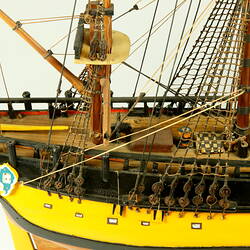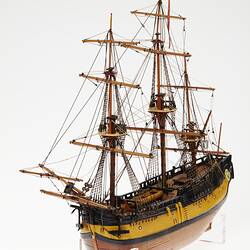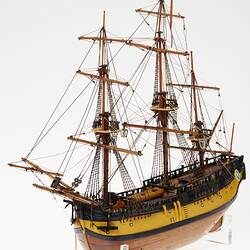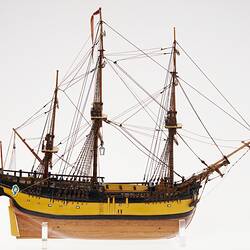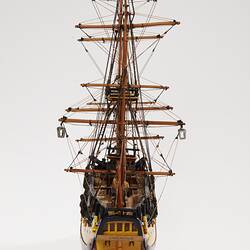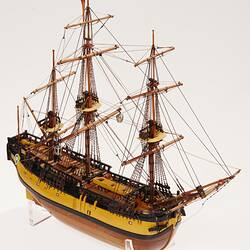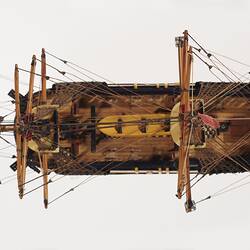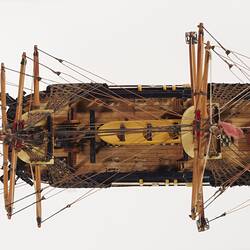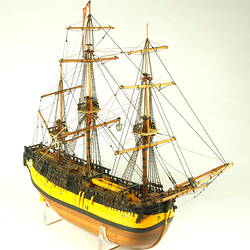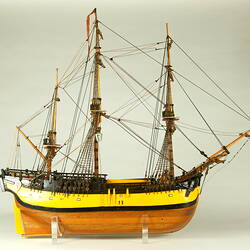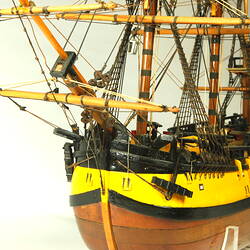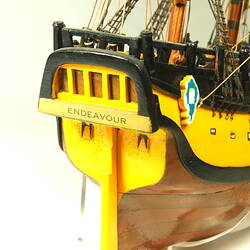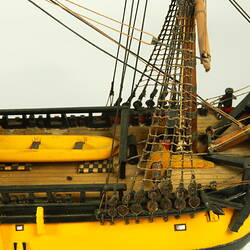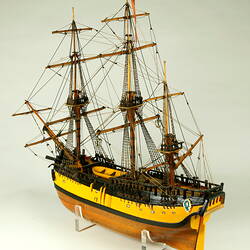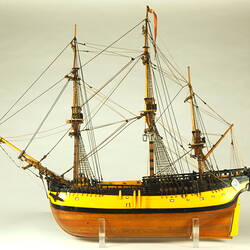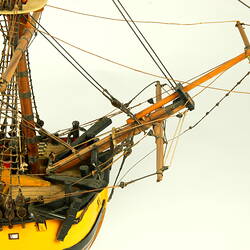Summary
The 1768-1771 voyage of the Endeavour under the command of Captain James Cook was one of the most important scientific exploration journeys of all time with a continuing legacy for Australia, New Zealand and the Pacific region. After observing the transit of Venus from a temporary observatory at Tahiti in 1769, Cook sailed to explore the "land the the Southward of the South Seas" as he wrote in the ship's log on 28 August 1769. Over the next 12 months the Endeavour explored and charted the coasts of New Zealand and Eastern Australia. Endeavour had originally been built as a coal carrier at Whitby as the 'Earl of Pembroke', a 'square-stern bark' of 368 tons. The good sea-going qualities and larger cargo capacity made this type of vessel a better choice for the long voyage than a naval ship.
This model was donated to the Museum in 1952. It was made by Edward Freeman Prentice in 1937.
Physical Description
Wooden model ship with varnished hull, yellow and black painted quarters and rudder and three masts with rigging, no sails.
More Information
-
Collecting Areas
-
Acquisition Information
Donation from Mrs W. John Haysom, Sep 1952
-
Maker of Item Modelled
-
Inscriptions
At rear: ENDEAVOUR
-
Classification
Water transport, Wind power - sailing vessels, Model barques - naval exploration
-
Category
-
Discipline
-
Type of item
-
Object Dimensions
590 mm (Length), 210 mm (Width), 520 mm (Height)
Height 530mm with perspex stand.
-
Keywords
Barques, Naval Vessels, Sailing Vessels, Scale Models, Ship Models

